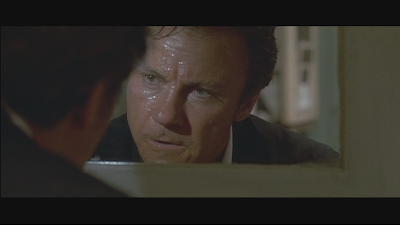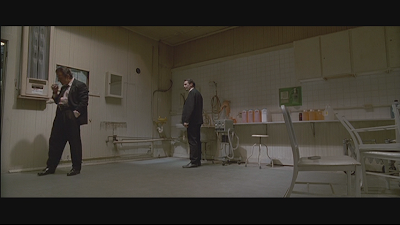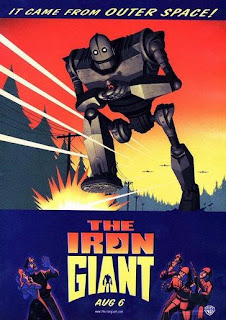Thursday, October 28, 2010
Coming Attractions: The Thing
Wednesday, November 3rd at 7 and 9:15 pm.
Wednesday, October 27, 2010
Tuesday, October 26, 2010
Top 5 Top 5 Lists Related To, But Not Including, Evil Dead 2: Dead By Dawn
Top 5 Sam Raimi Films:
1. Army of Darkness (1992)
2. The Quick & The Dead (1995)
3. Drag Me To Hell (2009)
4. Spider-Man (2002)
5. Darkman (1990)
Top 5 Films Shot by Peter Deming:
1. Mulholland Dr. (David Lynch, 2001)
2. Lost Highway (David Lynch, 1997)
3. Austin Powers (Jay Roach, 1997)
4. Drag Me to Hell (Sam Raimi, 2009)
5. I Heart Huckabees (David O. Russell, 2004)
Top 5 Films Produced by the De Laurentiis Entertainment Group:
1. Bill and Ted's Excellent Adventure (Stephen Herek, 1989)
2. Blue Velvet (David Lynch, 1986)
3. Manhunter (Michael Mann, 1986)
4. Cobra Verde (Werner Herzog, 1987)
5. Earth Girls Are Easy (Julien Temple, 1988)
Top 5 Horror Movie Sequels I Haven't Seen But Want To:
1. Curse of the Cat People (Robert Wise & Gunther von Fritsch, 1944)
2. Exorcist II: The Heretic (John Boorman, 1977)
3. Blade II (Guillermo del Toro, 2002)
4. Diary of the Dead (George Romero, 2007)
5. Troll 2 (Claudio Fragasso, 1990)Top 5 Films of 1987:
1. The Princess Bride (Rob Reiner)
2. Broadcast News (James L. Brooks)
3. Empire of the Sun (Steven Spielberg)
4. Full Metal Jacket (Stanley Kubrick)
5. Raising Arizona (The Coen Brothers)
Sunday, October 24, 2010
Links: Evil Dead 2: Dead by Dawn
When I asked him for poll ideas this week, Mike suggested "Who is your favorite Stooge?", but I was mystified as to its connection to this week's film. I should have read this review of the film, from The New York Times back in 1987. For the record, Iggy is my favorite Stooge.
Roger Ebert took another tack, however, looking at it as some kind of deconstruction of Stooginess:
"look a little closer and you'll realize that the movie is a fairly sophisticated satire. Level One viewers will say it's in bad taste. Level Two folks like myself will perceive that it is about bad taste."
I'm, going to stay out of that argument. and note instead that it's a big week for zombies in Seattle, as Evil Dead star Bruce Campbell will be in town this weekend to perform a wedding at the EMP. Unfortunately, I'm already married, but maybe Mike should see if he can get in on this?
Thursday, October 21, 2010
Coming Attractions: Evil Dead 2: Dead by Dawn
Wednesday, October 27th at 7 and 9 pm.
Giveaways: Army of Darkness DVD courtesy of Scarecrow Video and a Gift Certificate to Cinema Books, respectively.
Seeya there!
Wednesday, October 20, 2010
Tuesday, October 19, 2010
Top 5 Top 5 Lists Related To, But Not Including, Reservoir Dogs
Top 5 Quentin Tarantino Films:
1. Pulp Fiction (1994)
2. Kill Bill 1 & 2 (2003 & 2004)
3. Inglourious Basterds (2009)
4. Jackie Brown (1997)
5. Death Proof (2007)
Top 5 Harvey Keitel-Starring Films:
1. Mean Streets (Martin Scorsese, 1973)
2. From Dusk Til Dawn (Robert Rodriguez, 1996)
3. The Last Temptation of Christ (Martin Scorsese, 1988)
4. Bad Lieutenant (Abel Ferrera, 1992)
5. Smoke (Wayne Wang, 1995)
Top 5 Steve Buscemi Films Not Directed by The Coen Brothers:
1. Living in Oblivion (Tom DiCillo, 1995)
2. Armageddon (Michael Bay, 1998)
3. Mystery Train (Jim Jarmusch, 1989)
4. Monsters Inc (Pete Docter, 2001)
5. Trees Lounge (Steve Buscemi, 1996)
Top 5 1990s Films Noir:
1. Miller's Crossing (The Coen Brothers, 1990)
2. Pulp Fiction (Quentin Tarantino, 1994)
3. Lost Highway (David Lynch, 1997)
4. The Last Seduction (John Dahl, 1994)
5. Bound (The Wachowski Brothers, 1996)

Top 5 Films of 1992:
1. Unforgiven (Clint Eastwood)
2. The Last of the Mohicans (Michael Mann)
3. Hard-Boiled (John Woo)
4. Glengarry Glen Ross (James Foley)
5. Centre Stage (Stanley Kwan)
Monday, October 18, 2010
Links: Reservoir Dogs
Jonathan Rosenbaum gave Quentin Tarantino's debut a qualified rave after seeing it at the Chicago International Film Festival back in 1992, with reservations that would become a common refrain when discussing his films:
"Our grasp of what’s going on is always in flux, and Tarantino’s skill with actors, dialogue, ‘Scope framing, and offbeat construction is kaleidoscopic. More questionable are the show-offy celebrations of brutality: buckets of blood, racist and homophobic invective, and an excruciating sequence of sadistic torture and (offscreen) mutilation that’s clearly meant to awe us with its sheer unpleasantness. It’s unclear whether this macho thriller does anything to improve the state of the world or our understanding of it, but it certainly sets off enough rockets to hold and shake us for every one of its 99 minutes."
Roger Ebert, however, disagreed, arguing that the screenplay was inadequate:
"I know the story behind the movie - Tarantino promoted the project from scratch, on talent and nerve - and I think it's quite an achievement for a first-timer. It was made on a low budget. But the part that needs work didn't cost money. It's the screenplay. Having created the characters and fashioned the outline, Tarantino doesn't do much with his characters except to let them talk too much, especially when they should be unconscious from shock and loss of blood."
But more enlightened than either of those is this 30 second reenactment of Reservoir Dogs by bunnies. Warning, language for grownups!
Friday, October 15, 2010
Reservoir Dogs Revisited
I wrote this for another website a couple years ago, but it took a lot of work so I'm going to post it here as well. Apologies if you've already read it.
Reservoir Dogs is a brilliant piece of filmmaking, a cheap, theatrical genre film that overcomes its limitations in location variety through masterful camerawork while simultaneously playing with the conventions of the heist film. The opening sequence is justly famous, with its gangsters having breakfast while arguing over the true meaning of "Like A Virgin" (prior movie gangsters would never admit to listening to Madonna) and whether or not to tip waitresses (the kind of mundane issue raised to importance through grandiose dialogue stylization that would become Tarantino's trademark). But the third scene, I think, serves to show just how subtly effective Tarantino's direction can be. There are many things to talk about in this film, but this scene struck me on watching it again, so I'd like to look at it in detail, if you'll indulge me.
It starts just after Mr. Pink has arrived at the rendez-vous. He and Mr. White head to the back to wash up and try and reconstruct what happened at the heist. First, we have a long shot of Mr. White framed by a hallway. We're distant from him (still wanting to linger with the quite dramatic Mr. Orange), and Mr. Pink is off-screen ranting. Isolating Mr. White leads us to privilege his POV over that of Mr. Pink:
This shot is held for several minutes, broken up by Keitel's anxious walks to the doorway in the middle distance (to check on Mr. Orange), and finally by Mr. Pink's entrance from behind the wall:
This setup only changes when Mr. White lights their cigarettes, leading us to a medium two-shot (slightly offcenter, with Pink pushing White to the edge of the frame befitting his agressive behavior) of the two of them arguing. From now on, we'll be more concerned with their argument than the condition of Mr. Orange.
This setup is broken up by a flashback showing Mr. Pink's escape from the police:
But soon, we're back in the warehouse in a closer balanced shot:
Pink moves away, back and to the right, opening up the room into the first master shot we get, a low angle, diagonal shot with White in the far back corner and Pink in the right foreground:
Tarantino then sets up a shot/reverse shot pattern, but one that is not deteremined by the characters' POVs, but instead an alternating series of closer shots from the POV of an offscreen observer:
Note that the cuts here do not correspond to whoever is talking, as in most Hollywood films. Throughout this scene, as much dialogue is offscreen as it is on, with the camera lingering on the non-speaking actor as much as the histrionic one.
Anyway, the alternating shots continue for awhile, with the cutting getting more rapid as Mr. Pink pulls out and checks his gun:
Eventually, Pink gets up and approaches White, which we see from the same master shot, this time unbalanced with both charcters in the background:
Then we cut axially to a closer version of the same shot:
And back out again:
This time, White walks off to the left, while Pink stays in place, setting up a new shot/reverse shot sequence:
The cut here is very smooth. Offscreen, Pink says "I got the diamonds". We see White whril around to face him, and then cut to Pink:
And back to White:
Who walks into Pink's frame for a congratulatory twoshot:
A reverse cut is followed by White moving back to his previous position, with a slight camaera movement to recreate the framing of the inital shot/reverse shot setup:
Cut to Pink, now twisted to almost face the camera:
He rotates and the camera reframes as White moves to the mirror on the back wall:
White paces back and forth, and with the mention of an undercover cop, we cut back to the master shot:
And back to the previous shot (its not really shot/reverse shot, but it is the third pair of alternating shots in the scene):
As they begin to argue over who the rat is, White turns and faces Pink, giving us a slightly off-balance two shot with both characters fighting for the middle of the frame:
And again out to the master:
Pink exits to the left, and White is again alone in the distance, echoing the opening shot of the sequence and transitioning into his flashback (complete with title card).
Thus is a ten minute sequence consistenting of nothing but expository dialogue (no pop culture references, no jokiness) rendered consistently interesting. The characters are framed unconventionally, but in ways that tell us about who they are and what they're thinking not with POV shots, but in their spatial relations within the frame. The editing is unconventional as well, avoiding contemporary Hollywood methodology while also mixing various styles for dramatic effects (long takes, quick cuts, choosing not to cut when simply moving characters is as effective). In all, Tarantino uses the full repertoire of classical Hollywood filmmaking (think Hawks and Curtiz) in a way few of his peers can manage, with their fast-cutting disregard for either spatial relations or the more elegant ways of utilizing mise-en-scene in favor of dueling over-the-shoulder shots.
The movie, of course, has many other things going for it aside from good direction. The performances, for the most part are excellent, with Keitel bringing a poignancy to his character's relationship with Mr. Orange that's unusually tender for a gangster film, balanced with his own brooding solidity. This is also possibly Buscemi's best performance, the one where his natural weasliness is most balanced by a believable agressiveness (this is the only time he's been the least bit imposing, physically). Michael Madsen, of course, comes close to stealing the film as the psychotic Mr. Blonde, and Lawrence Tierney and Chris Penn are terrific as the father and son gangsters. There's even a guy who sounds exactly like, but is definitely not, Samuel L. Jackson.
Thursday, October 14, 2010
Coming Attractions: Reservoir Dogs
Wednesday, October 20th at 7:00 & 9:10 P.M.
Giveaways: Inglourious Basterds DVD courtesy of Scarecrow Video, and a gift certificate for Cinema Books, respectively.
See you there!
Wednesday, October 13, 2010
Tuesday, October 12, 2010
Top 5 Top 5 Lists Related To, But Not Including, The Iron Giant

Top 5 Things Directed by Brad Bird:
1. Ratatouille (2007)
2. The Incredibles (2004)
3. Like Father Like Clown (1991)
4. Krusty Gets Busted (1990)
5. Jack-Jack Attack (2005)

Top 5 Pixar Films:
1. WALL-E (Andrew Stanton, 2008)
2. Ratatouille (Brad Bird, 2007)
3. Toy Story 2 (John Lasseter, 1999)
4. The Incredibles (Brad Bird, 2004)
5. Up (Pete Docter, 2009)

Top 5 Movies About Robots:
1. WALL-E (Andrew Stanton, 2008)
2. AI: Artificial Intelligence (Steven Spielberg, 2001)
3. The Terminator (James Cameron, 1984)
4. Blade Runner (Ridley Scott, 1982)
5. Metropolis (Fritz Lang, 1927)

Top 5 Movies based on Works by (Non-Shakespeare) Poets:
1. Gunga Din (George Stevens, 1939)
2. Masque of the Red Death (Roger Corman, 1964)
3. Alice in Wonderland (Clyde Geronomi et al, 1951)
4. Faust (FW Murnau, 1926)
5. Smoke Signals (Chris Eyre, 1998)

Top 5 Films of 1999:
1. Eyes Wide Shut (Stanley Kubrick)
2. The Matrix (Larry and Andy Wachowski)
3. Ghost Dog: The Way of the Samurai (Jim Jarmusch)
4. Magnolia (Paul Thomas Anderson)
5. The Wind Will Carry Us (Abbas Kiarostami)
Thursday, October 7, 2010
Coming Attractions: The Iron Giant
Wednesday, October 13th at 7:00 & 9:00 P.M.
Giveaways: DVD courtesy of Scarecrow Video and a gift certificate for Cinema Books, respectively.
See you there!
Wednesday, October 6, 2010
Tuesday, October 5, 2010
Top 5 Top 5 Lists Related To, But Not Including, Citizen Kane
1. The Magnificent Ambersons (Orson Welles, 1942)
2. King of Kings (Nicholas Ray, 1961)
3. Duel in the Sun (King Vidor, 1946)
4. History of the World, Part 1 (Mel Brooks, 1981)
5. The Vikings (Richard Fleischer, 1958)
Top 5 Joseph Cotten Films Not Directed by Orson Welles:
1. The Third Man (Carol Reed, 1949)
2. Heaven's Gate (Michael Cimino, 1980)
3. Petulia (Richard Lester, 1968)
4. Shadow of a Doubt (Alfred Hitchcock, 1943)
5. Portrait of Jennie (William Dieterle, 1948)
Top 5 John Houseman-Produced Films:
1. Letter from an Unknown Woman (Max Ophuls, 1948)
2. On Dangerous Ground (Nicholas Ray, 1952)
3. They Live By Night (Nicholas Ray, 1948)
4. Moonfleet (Fritz Lang, 1955)
5. The Blue Dahlia (George Marshall, 1946)
Top 5 Movies About Newspapers and/or Reporters:
1. The Philadelphia Story (George Cukor, 1940)
2. His Girl Friday (Howard Hawks, 1940)
3. Park Row (Samuel Fuller, 1952)
4. Almost Famous, (Cameron Crowe, 2000)
5. It Happened One Night (Frank Capra, 1934)
Top 5 Films of 1941:
1. The Lady Eve (Preston Sturges)
2. How Green Was My Valley (John Ford)
3. The Shanghai Gesture (Josef von Sternberg)
4. Suspicion (Alfred HItchcock)
5. The Loyal 47 Ronin (Kenji Mizoguchi)
Subscribe to:
Comments (Atom)

























































